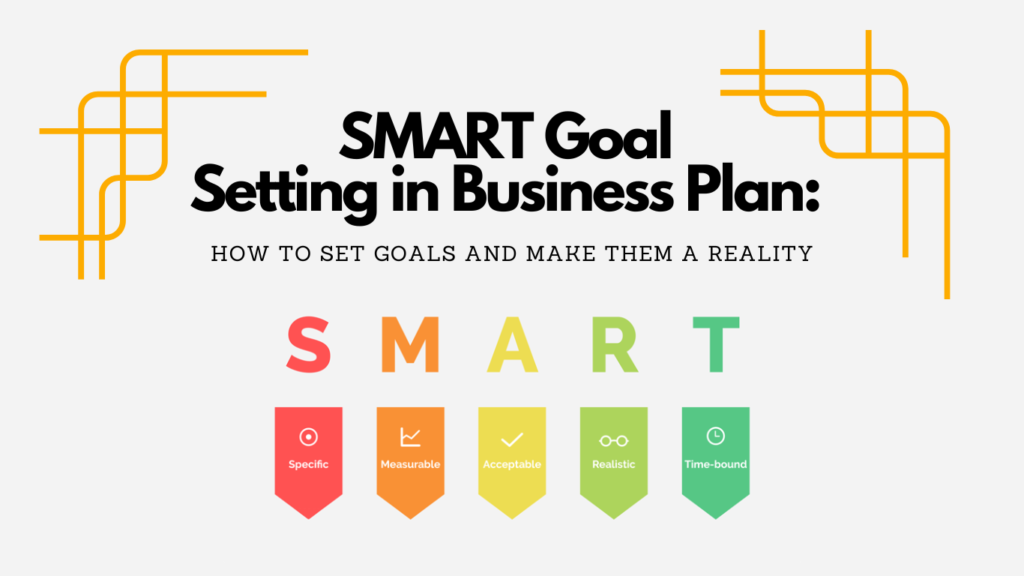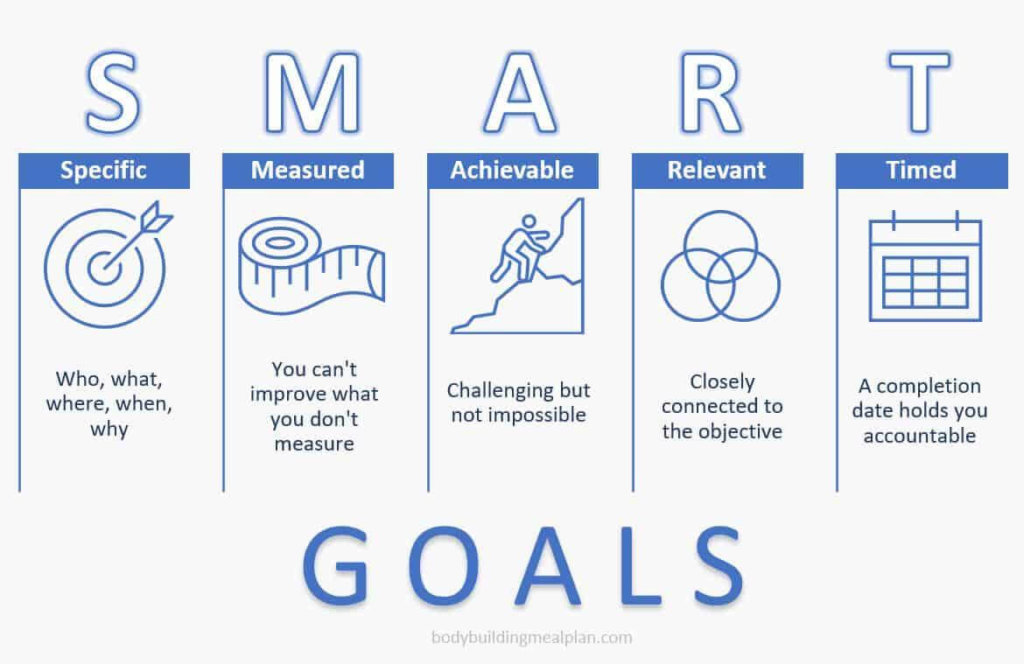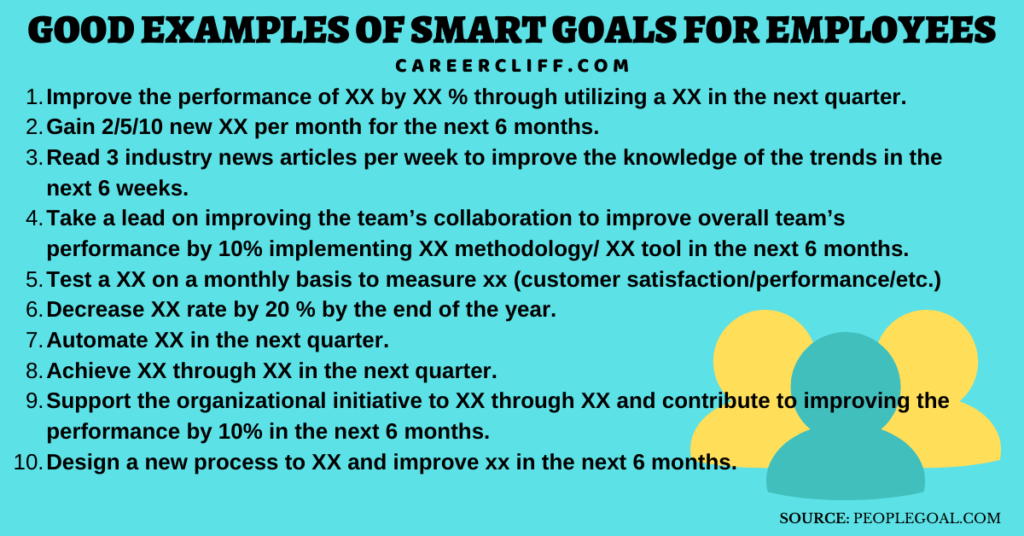Tips to Set Smart Goals in Your Business Plan

Goal setting is an essential part of any business plan. Without specific goals to aim for, it can be not easy to know what you are working towards and how to get there. However, setting goals is only the first step – you also need to make sure that your goals are feasible, and not worthy of Alice in Wonderland. And, this is where SMART goal setting comes in!
In this blog post, we will discuss the SMART goal-setting method and how you can use it to achieve your business objectives. We will also provide some examples of SMART goals to give you an idea of how this goal-setting technique works in real life
Stay tuned!

SMART Goals: What’s Behind It?
It appears business leaders love acronyms! Very poetic of the industry, indeed. Therefore, if you’ve ever come across business articles, you’ve probably seen the term SMART goals a million times. And, here we are talking about them just one more time, but we assure you in a far clearer way!
SMART goals were developed in 1981 by George Doran, Arthur Miller, and James Cunningham. Doran, who was a consultant and former Director of Corporate Planning of the Washington Water Power Company, published a paper under the name: “There’s a SMART Way to Write Management’s Goals and Objectives.” You can read an excerpt here.

The main idea behind SMART goals is that they provide a framework for setting clear and concise objectives that are easy to track and measure progress against. Yet, one thing to consider is that not all effective goals and objectives must enclose all five elements of SMART, au contraire Doran explains that:
So, you don’t need to make your mind go nuts just because some of your goals are missing one or two elements of these criteria. However, there is a lot to cover about this topic, keep reading!
SMART: Definition and Criteria
Over the years, the meaning behind each letter has changed, especially considering the rapid changes the business industry faces every single day. Yet, the classic and original meaning of the acronym still sticks and people still follow it.
So, what does SMART stand for? Below is a breakdown of each letter in the acronym and what it represents:
S – Specific: Your goal should be clear and well-defined. Ask yourself, who, what, where, when, why, and how?
M – Measurable: There should be a way to track your progress and determine whether you have achieved your goal.
A – Achievable: Make sure your goal is realistic and attainable. Set yourself up for success!
R – Relevant: Your goal should align with your company’s mission and vision.
T – Timely: Give yourself a timeline or deadline to work towards. This will help to keep you motivated and on track.

Also, Doran’s original formulation of SMART goals included two additional criteria: Evaluation and Revision, giving us SMARTER goals. However, these were later dropped as they are more concerned with the process of setting goals rather than the goal itself.
Now that we have covered the basics, let’s move on and discuss how you can use SMART goals to achieve your business objectives!
How to Use SMART Goals in Your Business Plan
Whether you are starting a new business venture or you are launching a new business campaign, you have to have a business plan settled and ready! A business plan will help you to identify your business goals and objectives, and it will also provide a roadmap for how you can achieve these goals.
Every business plan must -at least- have these 4 key elements:
- Executive Summary: Think of this as a snapshot of your business plan. It should include your business goals, a brief overview of your business model, and some key financial figures.
- Marketing Plan: This is where you will outline your target market, your marketing strategies, and your sales goals.
- Key Management Bios: This is where you will introduce the key members of your management team and provide a brief overview of their experience and expertise.
- Financial Plan: This is arguably the most important part of your business plan. Your financial plan will include your business budget, your revenue and expenses projections, and your business milestones.

Keep in mind that your business goals and objectives will be different from one stage of your business to the next.
No matter what stage your business is in, setting SMART goals will help you to achieve success!
For example, if you are a startup, your primary goal might be to get your business off the ground and start generating revenue. But, if you are an established business, your goal might be to launch a new product line or to expand into a new market.
Making Your Goals Specific
Imagine it’s New Year’s Eve and you are writing down your goals for the New Year. You might write something like, “I want to make more money this year” or “I want to get in shape.”
These are both great goals, but they are not specific enough. Let’s break down why:
“I want my business to make more money this year” This goal is too vague. How much money do you want to make? What will you do to make more money?
To make your goals specific, ask yourself who, what, where, when, why, and how
To make this goal more specific, you could say, “I want my business to make an extra $100,000 this year.” This goal is much more specific and it gives you a clear target to work towards.
TIP: When writing objectives, use action verbs such as analyze, perform, and determine. Avoid confusion using jargon.
Making Your Goals Measurable
The next step is to make sure that your goals are measurable. This means that you need to be able to track and measure your progress towards achieving your goal. For example, let’s say your goal is to “improve customer satisfaction.” How will you know if you have achieved this goal?
If your goal is not measurable, it’s difficult to know if you are making any progress at all
To make this goal more specific and measurable, you could say, “I want to increase customer satisfaction by X% within the next X months.”
TIP: Don’t forget about metrics and data collection, as well as tracking tools to know how you are doing in the timeline. For example, metrics such as customer satisfaction, employee retention, acquisition costs, website traffic, and social media are essential to performing a structured follow-up.
Ensure that you have the right tools in place, such as Google Analytics, which will allow you to access your data quickly and simply

Now that we have a specific and measurable goal, we can start tracking our progress towards it!
Making Your Goals Achievable
The next step is to make sure that your goals are achievable. This means that your goals should be realistic and within the realm of possibility. Like we said before: not worthy of being a topic at a tea party in Alice in Wonderland.
For example, let’s say your goal is to “double your business revenue.” Is this an achievable goal? It depends, of course.
If you are a one-person business making $50,000 per year, then doubling your revenue might not be realistic. On the other hand, if you are a well-established business making $500,000 per year, then doubling your revenue might be achievable.
If you are a new business venture and you don’t have past performance numbers to compare with, invest in researching the industry and performing a SWOT analysis (yes, another acronym!) SWOT is an acronym that stands for Strengths, Weaknesses, Opportunities, and Threats.
When in doubt, always overestimate the time and resources required to complete a goal. This will help you to avoid setting unrealistic goals and becoming frustrated when you don’t achieve them

According to Forbes, the SWOT analysis is one of the most overlooked business analyses out there. If this piqued your interest, here you can read more about it! By performing a SWOT analysis, you can gain a more holistic understanding of your goal and develop a plan for achieving it.
TIP: Ask yourself if your goal is something that you can actually do given the resources (time and money) you have. And if you don’t have them, can you get them without risking the whole business?
Making Your Goals Relevant
The next step is to make sure that your goals are relevant and PERTINENT. This means that your goals should be aligned with your business objectives. For example, if your objective is to “grow your business,” then a goal of “launching a new product line” would be relevant.
However, a goal of “taking a vacation” would not be relevant (although it might be nice, we give you that!)
Yet, there is one important question to ask: Why? Why is this goal important?
You don’t want more “likes” on Instagram just because… you want more likes on that social media platform because this increases your brand visibility, and you know most of your customers are there. Always keep the end-game in mind!
TIP: When in doubt, always ask yourself if your goal is something that will help you achieve your objectives. If the answer is no, then it’s probably not a relevant goal.
Also, review your business objectives regularly to ensure that they are still relevant and that your goals are still aligned with them.
Making Your Goals Time-Bound
The last step is to make sure that your goals are time-bound. This means that you need to set a deadline for achieving your goal. Without a deadline, it’s easy to put off working towards your goal indefinitely.
For example, let’s keep the goal of “launching a new product line,” but when do you want to achieve this goal? In six months? A year? Two years? When setting a deadline, be realistic!
Don’t set a goal to launch your new product line in two weeks if it’s going to take six months to develop the product. However, don’t set a goal to launch your new product line in two years if you could do it in six months.
If you’re not sure how long it will take to achieve your goal, ask someone who has done it before or do some research
Once you have a deadline, make a good rule of thumb is to give yourself 50% more time than you think you need to complete a goal. This will help you to avoid any unnecessary stress and pressure.
TIP: It can sometimes be useful to divide a goal into two sections to better track progress. If you are going to launch a new product line you could break this down into two smaller goals:
(i) developing the product and,
(ii) marketing the product.
Remember that you can (and should) adjust your goals as you go. As your business changes and grows, so too will your goals. What was once a relevant and time-bound goal might no longer be after a while!
And… that’s okay! Just make sure to reassess and readjust your goals accordingly.
Below, you can see some good examples of SMART goals!

Final Considerations
You’ve made it!
Now that you know how to set SMART goals, it’s time to put them into action. Sit down with your team and brainstorm some of the goals you want to achieve. Once you have a list of goals, start setting deadlines and putting together a plan of action.
Don’t stress out and remember to review and readjust your goals regularly. The business world is always changing, so it’s important that your goals change with it.
We hope this article was helpful. We wish you the best of luck in achieving all your business goals!
-The Monitask Team



